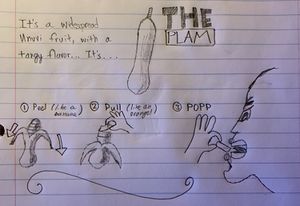Food: Difference between revisions
No edit summary |
No edit summary |
||
| Line 4: | Line 4: | ||
== Cheese == | == Cheese == | ||
''Main article: [[Cheese]]'' | ''Main article: [[Cheese]]'' | ||
Cheese is widely enjoyed on Pavala. | Cheese is widely enjoyed on Pavala. | ||
== | ==Ganuoan cuisine== | ||
''Main article: [[Ganuoan cuisine]]'' | |||
Makes use of [[sugo]], [[ketae]], various still unnamed others. | |||
==Unuvi cuisine== | |||
''Main article: [[Unuvi Cuisine]]'' | ''Main article: [[Unuvi Cuisine]]'' | ||
Revision as of 18:01, 1 February 2022
Pavala has diverse cuisine cultures, influenced by religion and ecology. This page contains some of the most popular and staple dishes from the world's various cultures.
Food
Cheese
Main article: Cheese
Cheese is widely enjoyed on Pavala.
Ganuoan cuisine
Main article: Ganuoan cuisine
Makes use of sugo, ketae, various still unnamed others.
Unuvi cuisine
Main article: Unuvi Cuisine
Plam

Plams are a cross between a banana and an orange; the succulent, sweet part grows in columns inside a banana-like structure, but when peeled more closely resembles an orange with compartmentalized, disc-like pieces that are generally sweet but with a slight tinge of citrus.
Kìchui
The kìchui is a vegetable that is used to create kìchuiseti ('seti'), the paste which is the backbone of Unuvi cuisine. It is significantly sweeter than miso paste. It is often combined with fusave in a stew.
Fusave
Fusave, also known as Unuvi Rice, is a type of cereal crop that is native to Unuvun.
Chive
Rice bread flavored with plams.